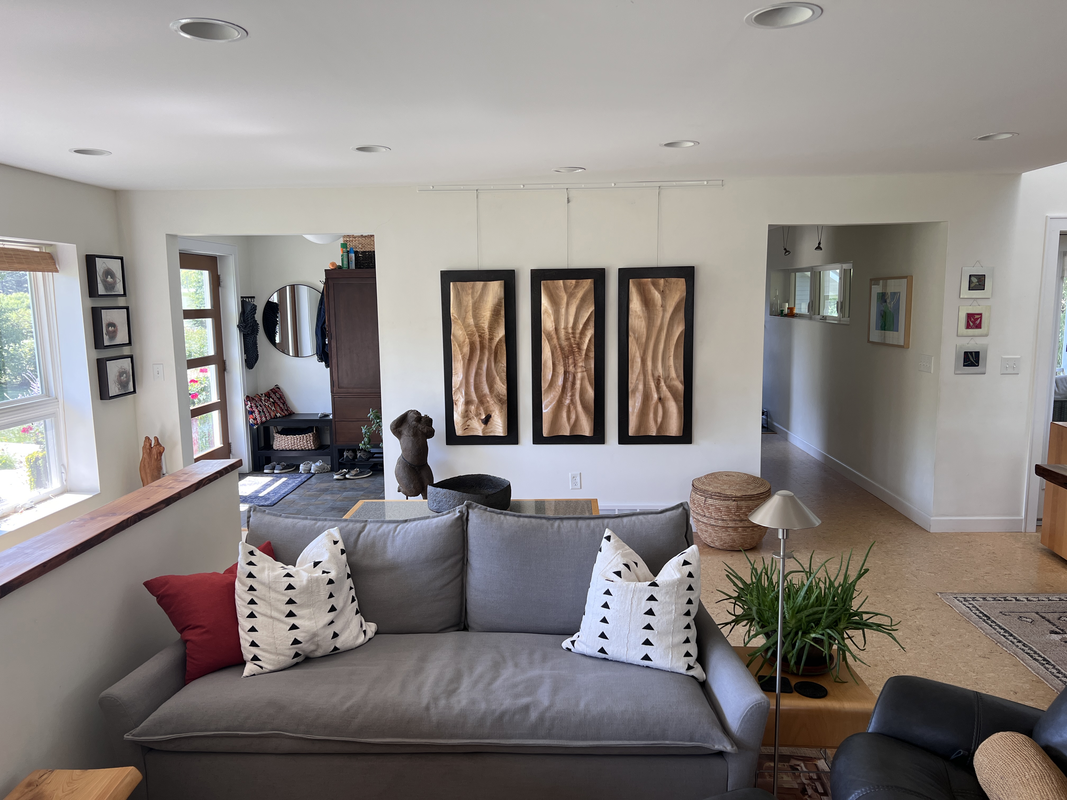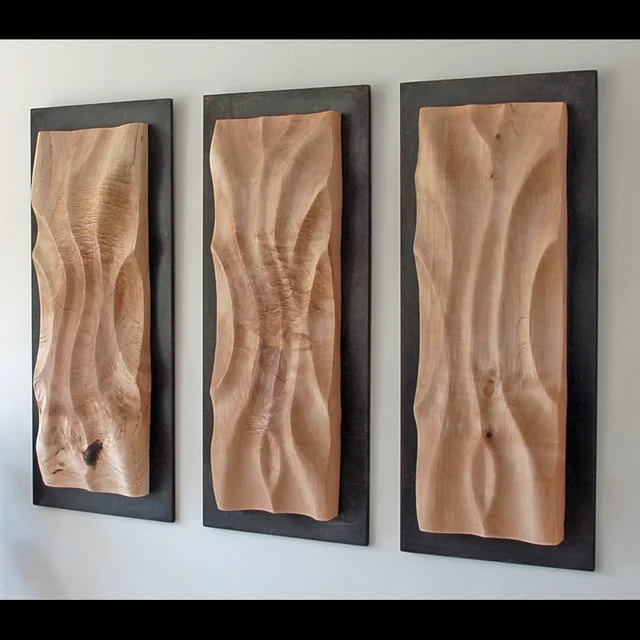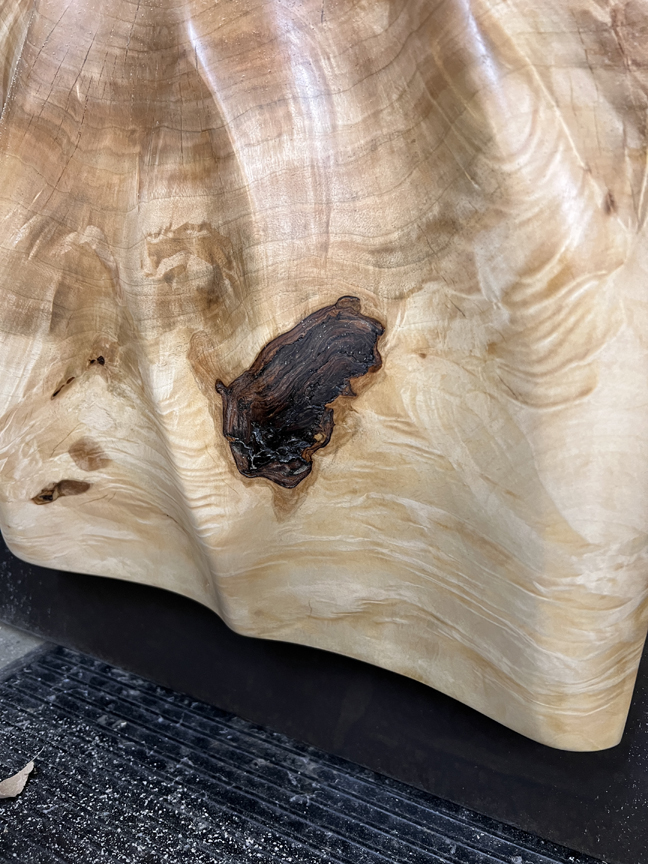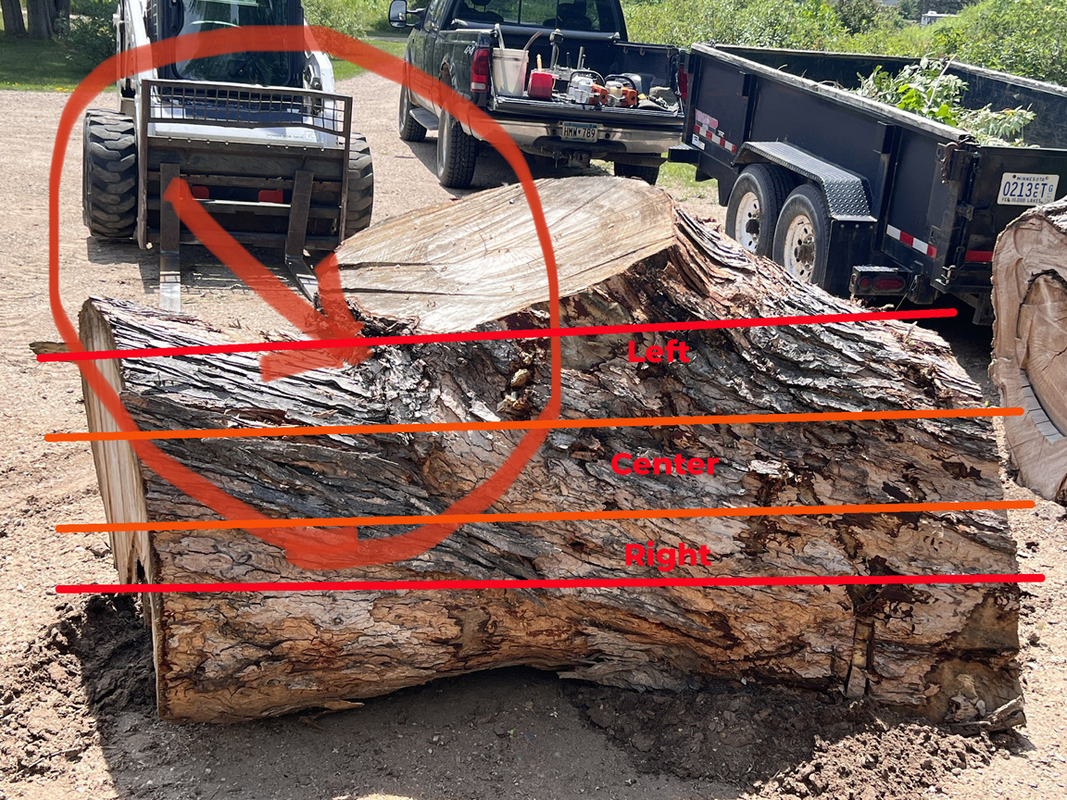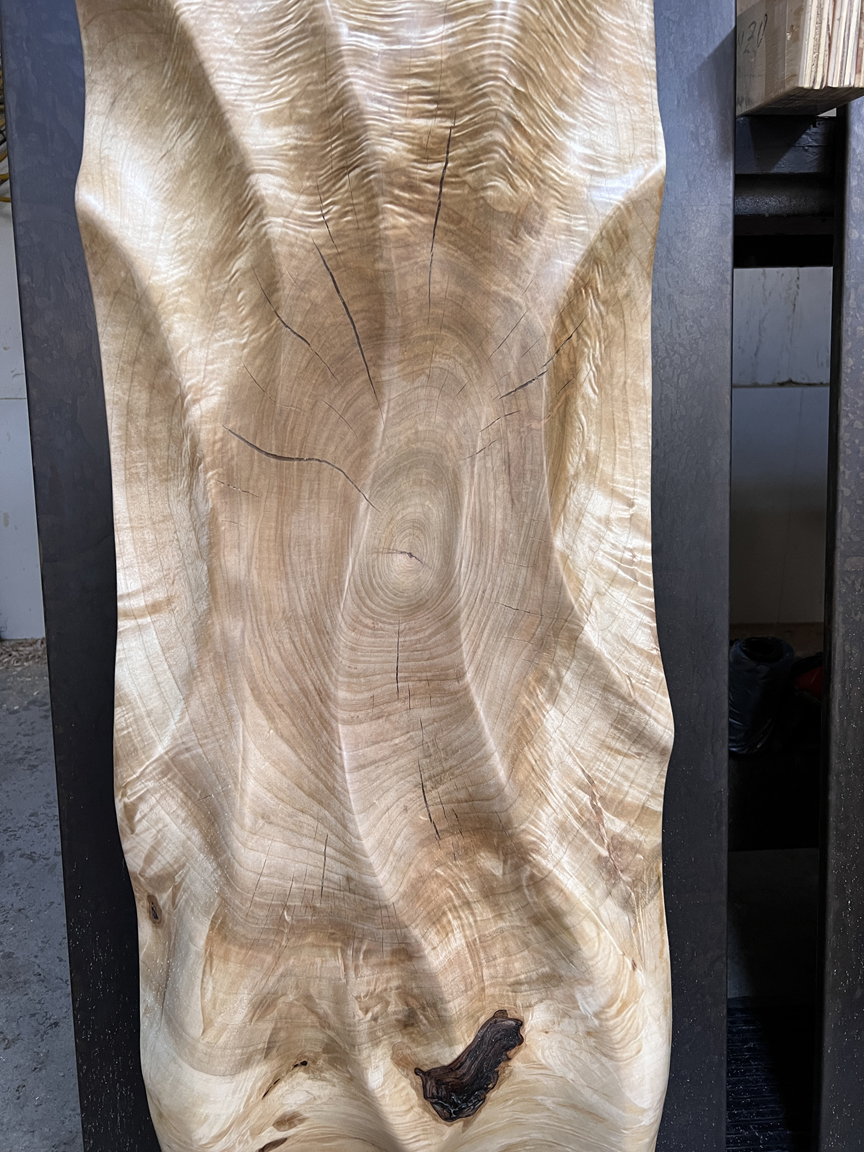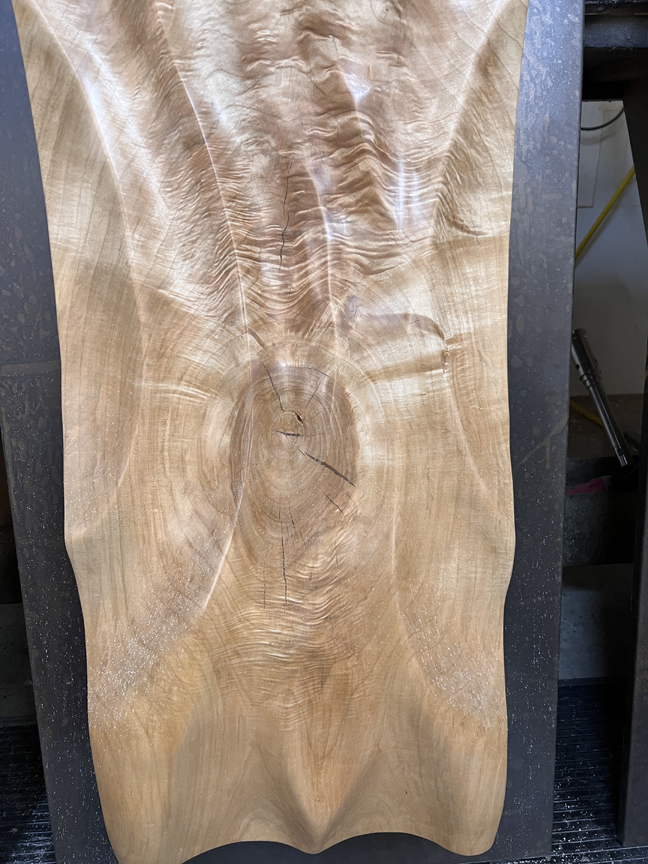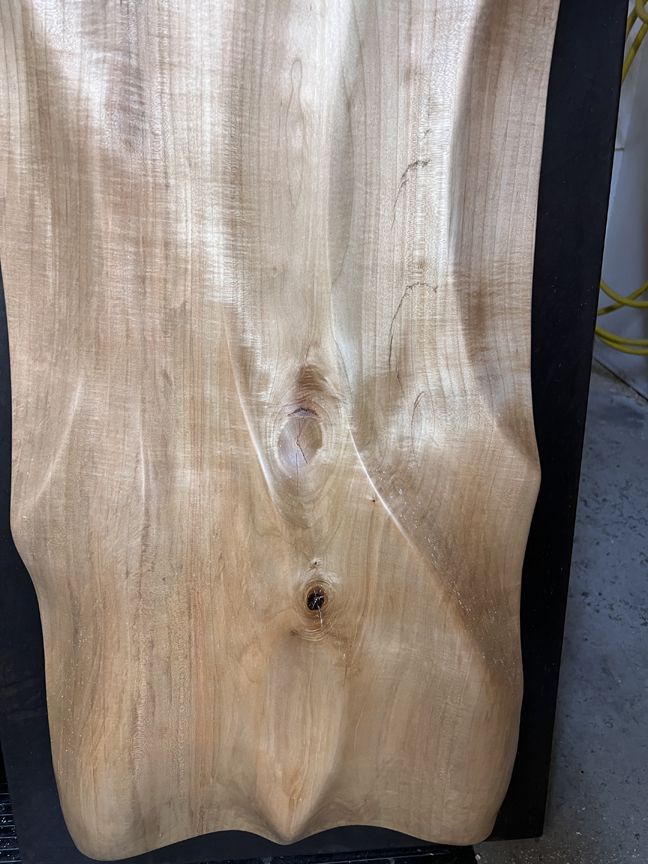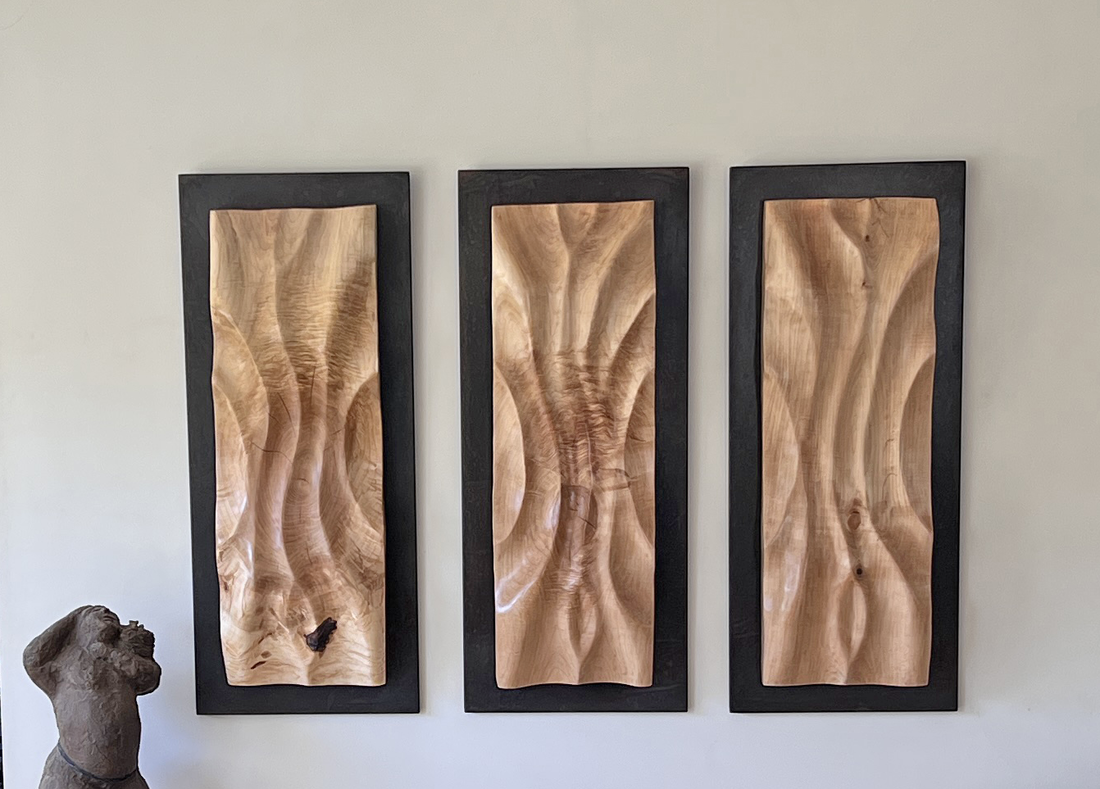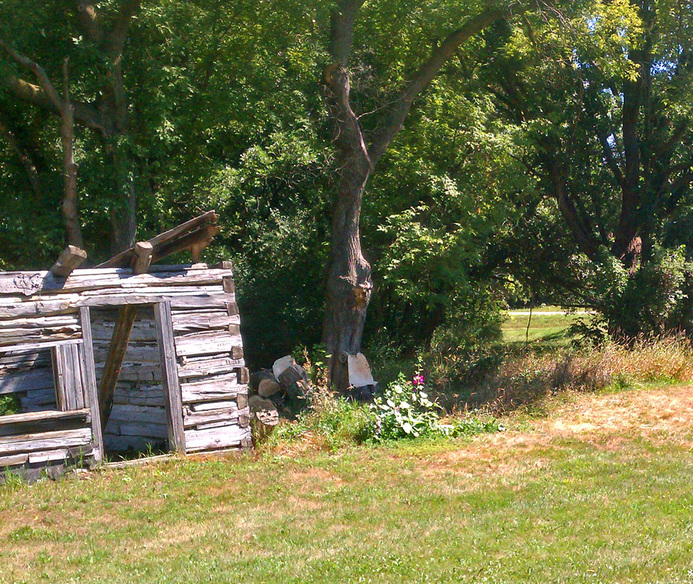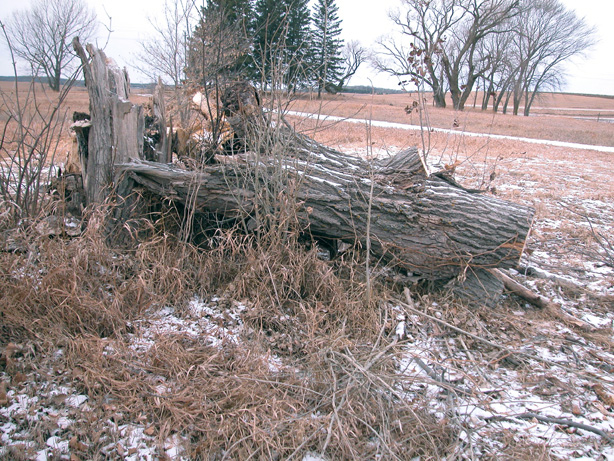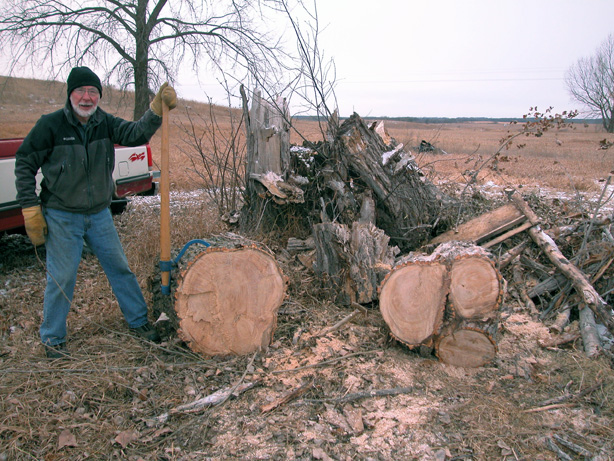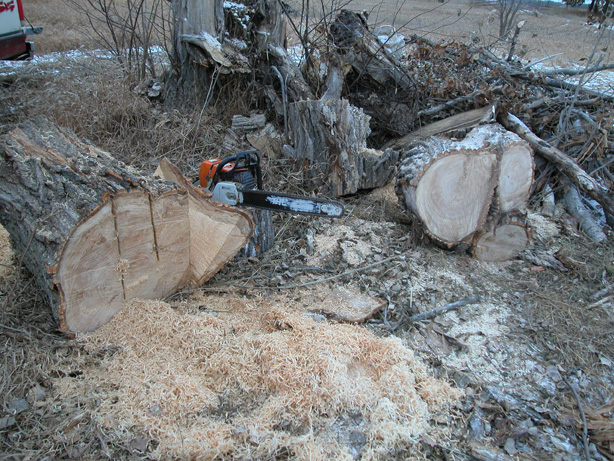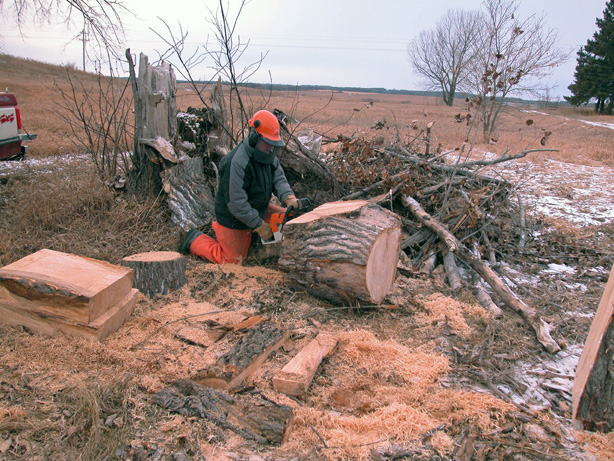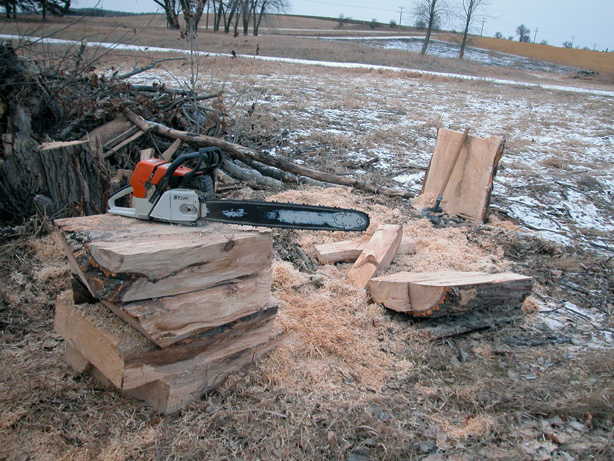|
A set of Sirens is telling a tale of the tree from which it came, it is the Song of the Sirens. The closer you look the more you see in this Silver Maple triptych: And closer still: But what's that dark spot on the left panel? This is a great question. When I am carving large pieces from logs, I am looking for very interesting grain patterns. Generally these happen in areas of the log that are growing under pressure, or compression zones. These zones are most typically found under the forked areas in trees and under branches. In this case I was using a log that had a very large branch growing out of its center. The orientation of the panels is with the bottom/compressed side of the log to the top of the panel, this area is where there is the boldest figure. This picture below shows how the panels came out of the log, and the arrow represents the dark feature on the left panel. You can see that I have centered the branch/knot equidistant from the bottom edge in all three pieces. In sequence here are the panels from left to right: LeftMiddleRightThese pictures tell the story of the tree. You can see on the outer/left panel where the large branch came out of the tree when it was mature. The center panel represents the same branch, albeit smaller, when the tree was still young. And finally the right panel shows the branch not long after it first appeared on the tree. As a tree grows it adds a layer/ring to its outside. So the further you go into the log the further you excavate back to where the tree began.
The curing cracks you see surrounding the branch area have been filled and stabilized with epoxy resin. The inclusions, knots, and cracks are all very deliberate elements of my sculpture. I can't control exactly how they will all fall into place but they are there by design and don't in any way compromise the integrity of the piece. The effect is to keep my work from appearing flat.
2 Comments
This is a series that covers the process of creating one of my "Five Elements". From identifying the source log to applying the final coat of oil you will come away with a new appreciation for my work. In this episode I'm at the Fergus Falls landfill de-barking Elm logs and hauling them home. This is a series that covers the process of creating one of my "Five Elements". From identifying the source log to applying the final coat of oil you will come away with a new appreciation for my work. In this episode I'm at the Fergus Falls landfill scouting logs. I find myself in many conversations involving the use of exotic woods. At times it seems as though I'm in a "Who can Stump the Wood Guy" competition. Having worked with wood for my entire career and holding a degree involving wood technology I guess I should be aware of more exotic woods than most. However there are in fact many, many more wood species that I am not familiar with nor ever will be. And that's OK with me. Exotic woods by definition are "...of foreign origin or character; not native; introduced from abroad..." The truth be told I have never been the least bit interested in using materials that are not native to where I live and work. Having said that, I must remind you that all the beautiful woods I gather locally are indeed considered "Exotic" everywhere else in the world, so I suppose when viewed from a global perspective I do indeed work with exotics. I'd like to introduce you to three of my favorite Otter Tail County Exotics: 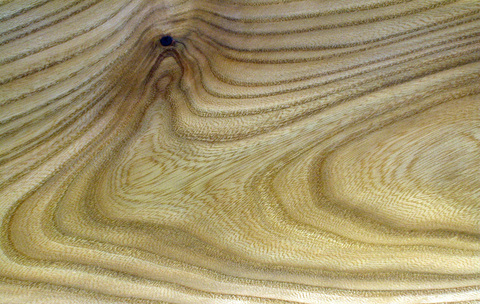 American Elm Ulmus americana This is one of the few woods I use that also has value as a furniture wood or for commercial lumber. I like the strength of the grain pattern. It's strong but not overpowering. Of particular interest is the fine wavy pattern in the summer growth (space between the rings). This herringbone pattern makes this specie shimmer. 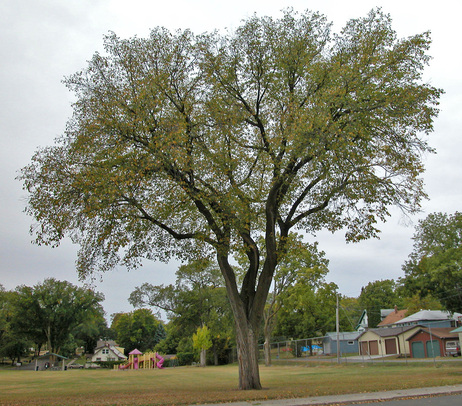 The broad, uniform canopy has made the American Elm a favorite urban tree valued for its shade in yards and parks. 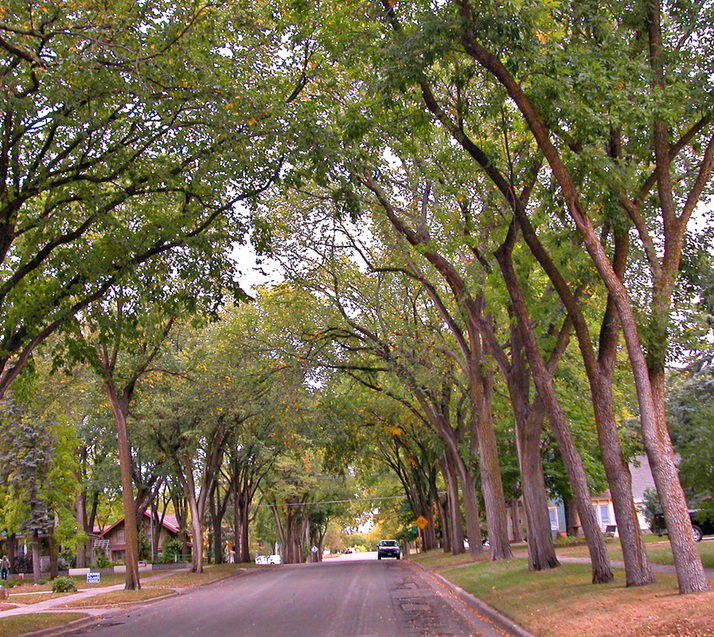 The American Elm has been a favorite for lining boulevards. These Elm tree-lined streets are fast becoming a thing of the past as Dutch Elm Disease (named for where the disease was first located not the specie) continues to decimate the Elm population. 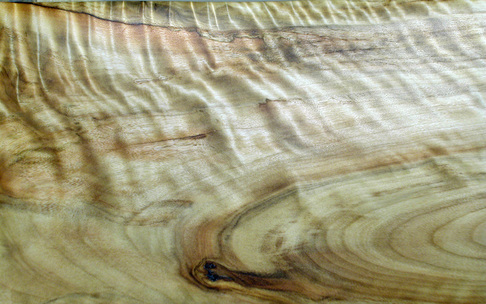 Cottonwood Populus deltoides Cottonwood has very little commercial value due to its low strength, density, and tensile attributes. It's often used for low value items such as pallets and lath. It is one of my favorites. The flame grain that I find in the cottonwood takes my breath away. 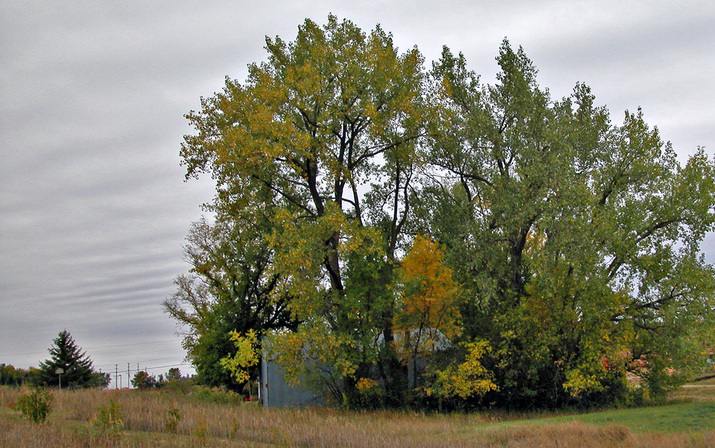 An incredibly graceful tree, I have measured local specimens with 6' diameters. The slightest breeze will produce a beautiful rustling sound as the thin, flat-stemmed leaves flutter. 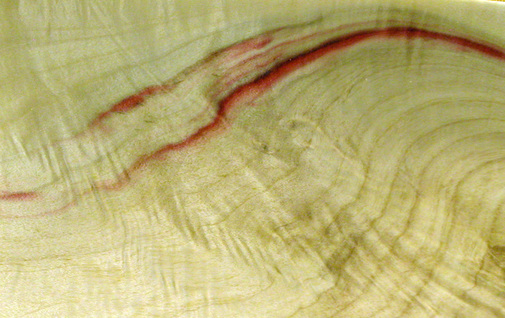 Boxelder Acer negundo Boxelder is a real show stopper. The vibrant dashes of red overlaid on the satiny grain of the Maple is striking indeed. In the rare cases where I carve a piece with no red present the result is almost as though it was made of ivory. 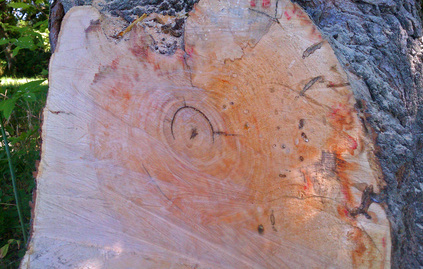 The red in the boxelder is present as the tree grows. This is a picture of a freshly cut boxelder log. What causes the red will be the topic of a future blog. Hint: Boxelder beetles are non-boring beetles. 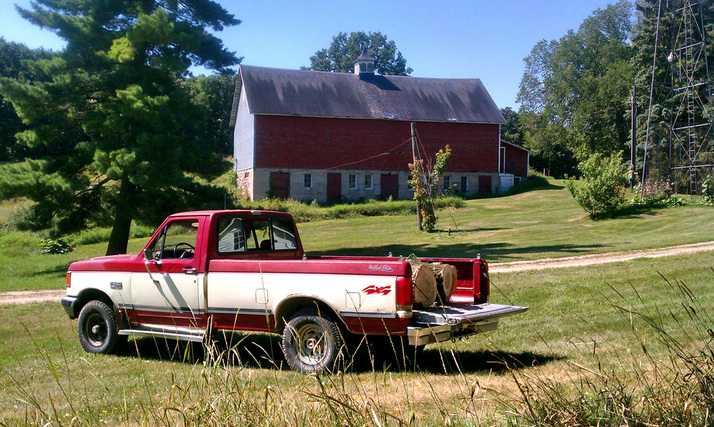 I have to say that I prefer knowing where my material comes from. Best wishes - Jay from the very Exotic Otter Tail County I've been wanting to carve another "Cottonwood Movements" triptych since I joyfully parted with my last set in Memphis last October. Cottonwood is one of my favorite woods to carve for several reasons: it is native to my region, it grows quite large, and it has terrific color and grain characteristics. I usually have easy access to cottonwood but this year it's been pretty tough for me to come by. So, it was great news when I heard from my friend Doc Bob that he had the remnants of a cottonwood that fell last summer for me to inspect. On a cold and breezy day a couple of weeks ago I loaded my saw and headed for rural Battle Lake. After a meandering tour of his farm we eventually arrived at the object of my interest. It really wasn't much to look at but there was enough to hold my attention. With some help from Doc Bob I managed to get a couple of sections crosscut and readied for ripping. Take note of the choppers and stocking cap Bob's wearing....they are mine. The temp was in the single digits fahrenheit so not too cold there however the wind was blowing out of the NW at about 25mph so it was a bit nippy. I was moving pretty quickly to stay warm. Not long before I had my blanks field dressed and ready to go. I've already carved the set and they are in my drying chamber. I was fortunate to get three sound blanks out of this trip as there was already a lot of dry rot and fungal activity taking its toll. Stay tuned, it shouldn't be much longer before I have a finished "Cottonwood Movements" to share with you.
|
About Me:
I'm a contemporary wood sculptor living and working in rural Minnesota. I gather my logs locally and travel the country selling what I make from them. Archives
October 2023
Categories
All
|

